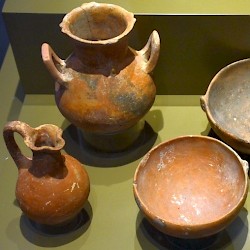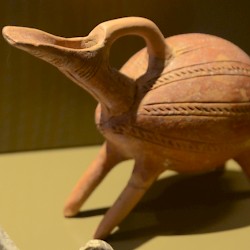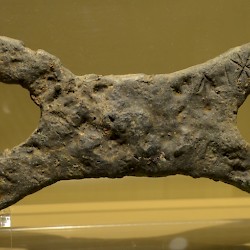Ledra and Leucusia
Q2508095Ledra and Leucusia: two towns in central Cyprus, modern Nicosia.
Location
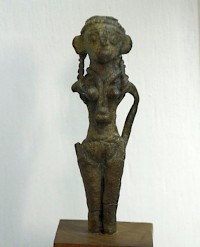
Cyprus is dominated by two chains of mountains: the Pentadaktylos in the northeast and the Troodos in the southwest. In between is the Mesaoria, the plain of the river Pediaeus. The upper part of this valley, where the two mountain chains come closest, must have been the site of an ancient kingdom named Ledra. It is mentioned for the first time in an Assyrian text, in which king Esarhaddon (r.680-669 BCE) records the tribute he had received from the kings of Cyprus, including one U-na-sa-gu-su šar mat Li-di-ir, “Onasagas, king of the land Ledra”.note
It is interesting that Li-di-ir is identified as a mat, a country, and not as a kur, a city. This suggests that there was no urban center, which explains why archaeologists have so far not identified significant remains. This point, however, must not overstressed.
Prehistory
The oldest archaeological finds in the area date back to the mid-third millennium BCE, at the turn of the Chalcolithic and the Early Bronze Age. Late Bronze Age objects have been discovered on a hill named Leontari, some 6½ kilometers southeast of the historical center of modern Nicosia. Leontari is a platform of about 200 x 300 meters, with a small cemetery. At the end of the nineteenth century, ruins from an unspecified period were still visible. Another cemetery has been identified near the Ayia Paraskevi church, halfway between Leontari and Nicosia.
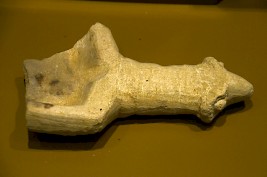
Except for the Bronze Age remains and the Assyrian reference, there is no information for centuries to come. The evidence that links the name of the kingdom to the archaeological remains, dates from about 485 CE: the author of the Acts of Barnabas, a Christian text written on Cyprus, mentions a village (komê) of the Ledrans where a travel companion of Barnabas found refuge. From the description, it becomes clear that it was at the upper valley of the Pediaeus river.
Classical and Hellenistic Age

Archaeological excavations have brought to light evidence for the periods after the Bronze Age. Among the areas excavated are Agioi Omologia, the site on the Agios Georgios hill known as Pa.Sy.D.Y. ("Pancyprian Public Employees Trade Union"), Koupati, and the two tombs identified at the Old Municipal Baths of Nicosia. The area directly south of the historical center of Nicosia was permanently occupied, but the remains are poor.
The epigraphic evidence, however, contains one beautiful gem: during the first quarter of the fourth century BCE, several Cypriot mercenaries in Egypt carved their names in the walls of the temple of Ahori in Karnak. Among them is a soldier from Ledra.
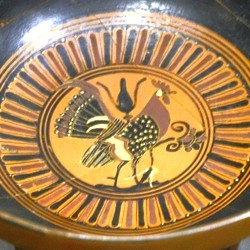 Nicosia, Agioi Omologites, Kylix |
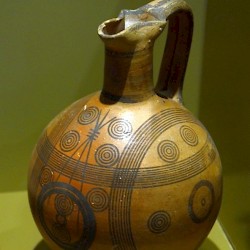 Nicosia, Old Municipality, Amphora |
 Nicosia, Old Municipality, Amphora |
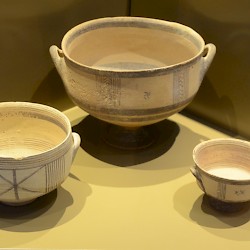 Nicosia, Agioi Omologites, Bowls |
Late Antiquity
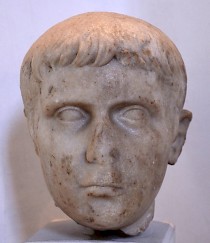
Despite the town’s insignificance in the Roman age, there was a bishop of Ledra. The Christian author Sozomen mentions a Triphyllius ("a man otherwise eloquent, who on account of practicing the law, had lived alone while at Berytus"), who occupied the ecclesiastical office.note Jerome calls the bishopric “Ledra or Leucotheon”, implying that bishop Triphyllius, who had written a Commentary on the Song of Songs during the reign of Constantius II (r.337-361), oversaw two villages that were very close to each other.note Because Leucotheon ("the white gods") or Leucusia is certainly identical to modern Nicosia, we can be certain that Ledra was not too far from the present capital of Cyprus. Triphylius is said to have offered everything he had to the poor after the earthquake that destroyed the Cypriote towns in 365.note
To sum up: Ledra was the name of an Iron Age kingdom in the upper valley of the Pediaeus river and never reached sufficient prosperity to leave recognizable monumental remains. There are only archaeological stray finds. It was close to modern Nicosia, which was called Leucotheon, but was not very big either. Probably, the area retained its agricultural nature and was never more than a set of villages in the hinterland of the big, industruous, rich ports.
Middle Ages
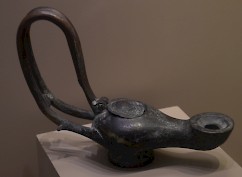
The Arab raids may have changed this. The coastal areas were no longer safe and perhaps people settled in Leucotheon/Leucusia, which was an attractive place for the Byzantine government to reside (after 965), when the harbor of Salamis/Famagusta had silted up. The last Byzantine ruler of Cyprus, Isaac Comnenus, lost the town in 1192 to Richard Lionheart, who in the end sold it to the Lusignan family, the kings of Cyprus in the Late Middle Ages. Since then, Nicosia has been rebuilt several times; what had remained from Antiquity, has been destroyed.
 Nicosia, Handle of a Rhodian amphora |
 Nicosia, Roman Oil Lamp with Bird |
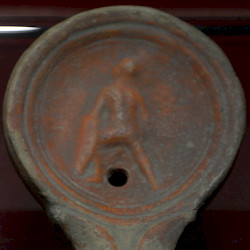 Nicosia, Roman Oil Lamp with Gladiator |
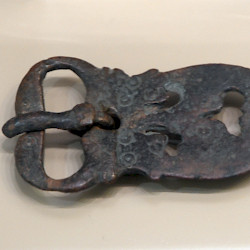 Nicosia, Late Antique Buckle |
